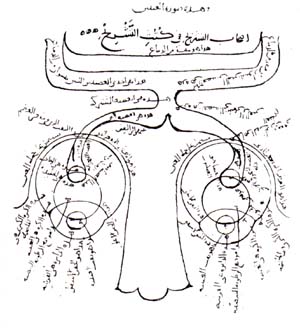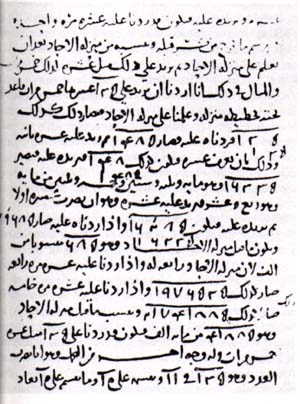Advances in Islamic Sciences - Part II

Geography (dated 1154): Arab geographers understood the basic outlines of Asia, Europe and North Africa by the 12th Century, and their knowledge was summed up in the great atlas of al-Idrisi. It places the south at the top, the diagram has been inverted to make it recognisable.
Top

Biology (dated 17th century): Arabic medicine was in advance in Europe throughout the middle ages, and from the first medical school of Salerno down to Vesalius, Western doctors learned from their muslim counterparts.
Top

Optics (dated 1083): Ibn al-Haytham's Optics, written in Eqypt in the first half of the 11th Century, represented a theory of vision that went beyond Galen, Euclid and Ptolemy. This diagram of the two eyes seen from above, shows the principal tunics and humours and the optic nerves connecting the eyeballs to the brain.
Top

Mathematics Decimal Fractions (dated 10th century): Decimal Fractions first appeared in Arabic in the work of the Damascene arithmetician Abu'l-Hasan al-Uqlidisi. This page from the unique manuscipt of al-Uqlidisi's Kitab al-Fusul shows the decimal point as a stroke above the number in the units place in lin 10.
Top

Mathematics - Parallel: The problem of parallel lines, posed by Euclid's parallels postulate, received much attention from Islamic mathematicians throughout the history of medieval Arabic science. Nasir ad-Din at-Tusi's was probably the most mature treatment of the problem in Arabic, making sure use of Euclid's definition of parallel lines as non-secant lines and drawing on the results of his predecessors.
Top
Back to Part I
|